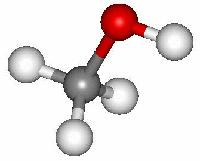|
The entry is based on
(1) V. V. Ilyushin, H. S. P. Müller, M. N. Drozdovskaya,
J. K. Jørgensen, S. Bauerecker, C. Maul, R. Porohovoi,
E. A. Alekseev, O. Dorovskaya, O. Zakharenko, F. Lewen,
S. Schlemmer, L.-H. Xu, and R. M. Lees,
2024, Astron. Astrophys. 687, Art. No. A220.
The study combines rotational and rovibrational data pertaining
to vt = 0 and 1 plus some low energy K
transitions of vt = 2. By far the most data are
from this work. A small amount of transitions below 35 GHz
are from
(2) Y.-B. Duan, I. Ozier, S. Tsunekawa, and K. Takagi,
2003, J. Mol. Spectrosc. 218, 95;
(3) M. S. Walsh, L.-H. Xu, R. M. Lees, I. Mukhopadhyay,
G. Moruzzi, B. P. Winnewisser, S. Albert, R. A. H. Butler,
and F. C. DeLucia,
2000, J. Mol. Spectrosc. 204, 60;
and from
(4) M. S. Walsh,
1999, MSc thesis, University of New Brunswick.
The quantum numbers are J, Ka,
Kc, and m. The values 0 and 1
of m correspond to A and E symmetry
lines, respectively, of vt = 0.
The sign of Ka (with "+" omitted")
reflects the parity for A symmetry states and the
usual signs of K values in degenerate vibrational
states for E symmetry states.
The calculated frequencies should be reliable throughout;
some caution is advised for transitions reaching the
limit of J (50) or Ka (19).
Please note:
No experimental lines have been merged in the present entry.
The list of
experimental lines (with reference labels) can
be accessed in the Cologne Spectroscopy Data section.
You can also access the
A symmetry and
E symmetry calculations separately.
The rotation-torsional part of the partition function is
converged. Small contributions by small amplitude vibrations
have been considered in the harmonic approximation. Please
note the mostly non-standard temperatures. Sep. 2024:
Corrected the listed partition function values which
did not contain contributions by small amplitude vibrations;
the intensities did already!
The dipole moment components were taken from a measurement
of 13CD3OH by
(5) I. Mukhopadhyay,
2015, J. Mol. Struct. 1098, 119;
the remainder of the dipole moment function was
taken from
(6) M. A. Mekhtiev, P. D. Godfrey, and J. T.Hougen,
2021, Infrared Phys. Technol. 116, Art. No. 103605.
|
